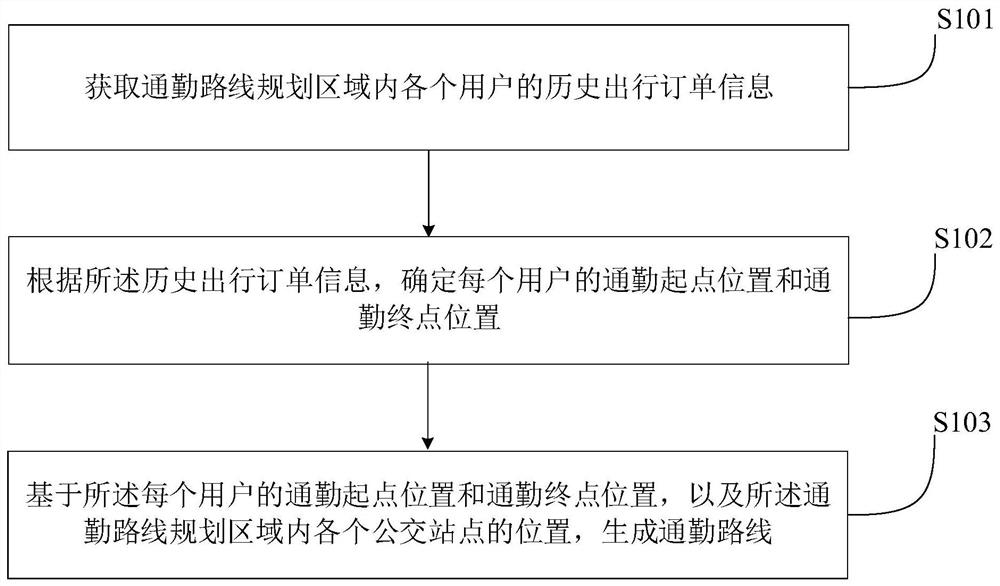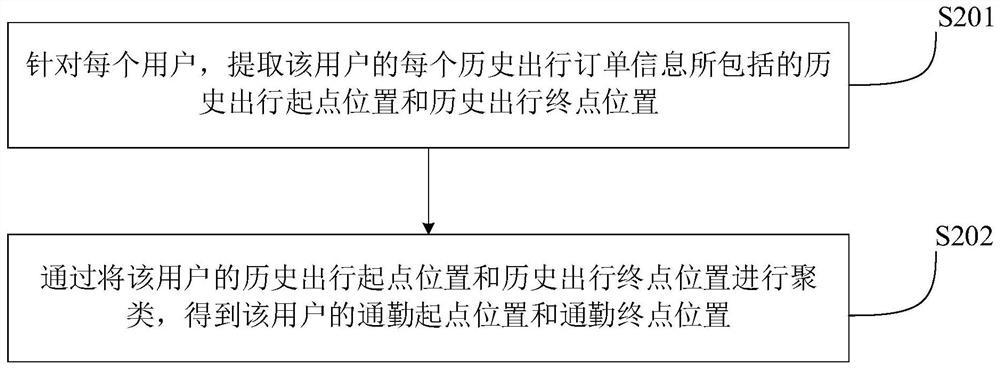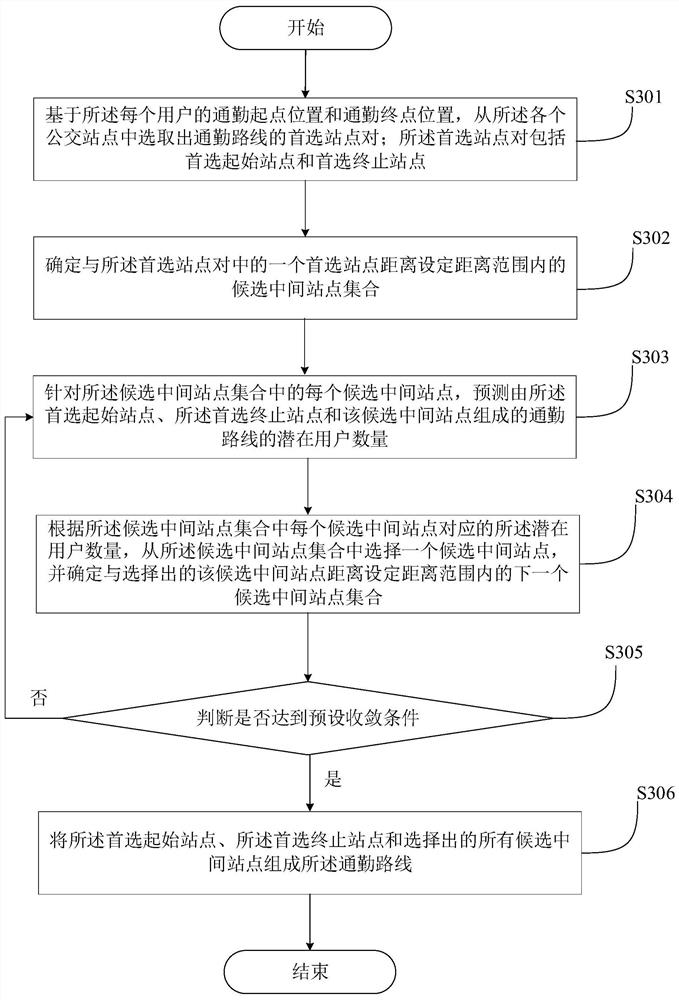A commuting route planning method and device, and computer equipment
A route planning and commuting technology, applied in the computer field, can solve the problems of poor timeliness, insufficient sample size, understanding and control of commuter travel for those who cannot commute, and achieves good practicability and comprehensiveness.
- Summary
- Abstract
- Description
- Claims
- Application Information
AI Technical Summary
Problems solved by technology
Method used
Image
Examples
Embodiment 1
[0140] like figure 1 As shown, it is a flow chart of a commuting route planning method provided in Embodiment 1 of the present application. The execution subject of the method may be a computer device. The above-mentioned commuting route planning method includes the following steps:
[0141] S101. Obtain the historical travel order information of each user in the commuting route planning area.
[0142] Here, the commuting route planning area may refer to an area for planning commuting routes. Considering the application scenarios of the commuting route planning method provided in the embodiment of the present application, the above-mentioned commuting route planning area may be an area corresponding to a city (such as Beijing), or an area corresponding to an administrative district (such as Haidian District), or It may be other areas where commuter route planning can be performed, which is not specifically limited in this embodiment of the present application.
[0143] For t...
Embodiment 2
[0152] like figure 2 As shown, the process of determining the commuting start position and commuting end position provided by Embodiment 2 of the present application specifically includes:
[0153] S201. For each user, extract the historical travel start position and historical travel end position included in each historical travel order information of the user;
[0154] S202. By clustering the user's historical travel start position and historical travel end position, the user's commute start position and commute end position are obtained.
[0155] Here, for each user, based on the cluster analysis results of the extracted historical travel start position and historical travel end position, the user’s commute start position and commute end position can be determined, that is, how to use the clustering method from a The core step of Embodiment 2 of the present application is to determine the user's commute start position and commute end position from among the user's multipl...
Embodiment 3
[0160] like image 3 As shown, the method for generating a commuting route provided in Embodiment 3 of the present application specifically includes the following steps:
[0161] S301. Based on the commuting start position and commuting end position of each user, select a preferred stop pair for commuting routes from the various bus stops; the preferred stop pair includes a preferred starting stop and a preferred ending stop;
[0162] S302. Determine a set of candidate intermediate sites within a set distance range from a preferred site in the preferred site pair;
[0163] S303. For each candidate intermediate site in the candidate intermediate site set, predict the number of potential users of the commuting route consisting of the preferred start site, the preferred end site, and the candidate intermediate site;
[0164] S304. According to the number of potential users corresponding to each candidate intermediate site in the candidate intermediate site set, select a candidat...
PUM
 Login to View More
Login to View More Abstract
Description
Claims
Application Information
 Login to View More
Login to View More - R&D
- Intellectual Property
- Life Sciences
- Materials
- Tech Scout
- Unparalleled Data Quality
- Higher Quality Content
- 60% Fewer Hallucinations
Browse by: Latest US Patents, China's latest patents, Technical Efficacy Thesaurus, Application Domain, Technology Topic, Popular Technical Reports.
© 2025 PatSnap. All rights reserved.Legal|Privacy policy|Modern Slavery Act Transparency Statement|Sitemap|About US| Contact US: help@patsnap.com



